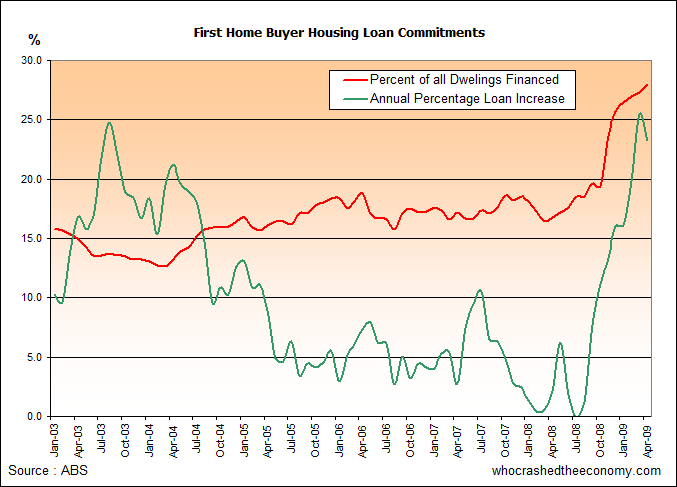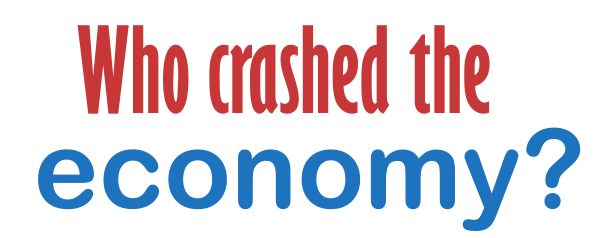Earlier this year, there was a lot of speculation and warning that the First Home Owner’s Boost would turn the First Home Buyers segment of the market into a subprime bubble. Data from the Australian Bureau of Statistics is now coming out which will confirm these fears.
On Wednesday, the ABS released Housing Finance Commitments for April 2009. It shows First Home Buyers now make up 28 per cent of dwellings financed, the largest slice since the ABS started collecting data on this in 1991. As you can see from the graph below, after the Boost was announced in October 2008, First Home buyers have come out in force. Once they represented about 17% of dwellings financed, today it’s more like 28%.

With all this extra competition to get the grant before it expires and at any cost, the size of First Home Buyers loans have shot though the roof exceeding figures not seen since the 2003 housing boom. Between July 2005 and the start of 2008, First Home Buyer loan commitments have been increasing by around 5% a year or in line with inflation.
By July 2008 any rises in FHB loans had grounded to a halt with the average size of a FHB loan that month being $246,400, $1,400 less than a year prior where the average loan was $247,800.
With the housing market in dire straights and on the verge of a long and well overdue correction, the Australian Government announced the First Home Buyers Boost in October 2008. Almost immediately the market went into overdrive and within the FHB segment of the market, has exceeded the unsustainable bubble of 2003.
Using the Prime Minister’s words, the scary part is “That all good things must come to and end.” Not only do First Home Owners have to worry about the scheme coming to an abrupt end, they are also faced with rising interest rates, rising unemployment and the real possibility they paid far too much all to get an extra $7,000 from the government.
» 5609.0 – Housing Finance, Australia, Apr 2009 – The Australian Bureau of Statistics, 14th June 2009.

Awesome blog! Scary graphs! Keep up the great work. The bigger they are, the harder they fall. And those home prices are going to plummet to the depths of hell.
Interesting. I would love to know how the total amount of loans compare to historic levels. Even if first home buyers are making up a larger portion of the total pool, if total loans aren’t increasing then there may not be an issue. Of course that is based on the assumption that these first home buyers have the ability to service the debt… time will tell i suppose